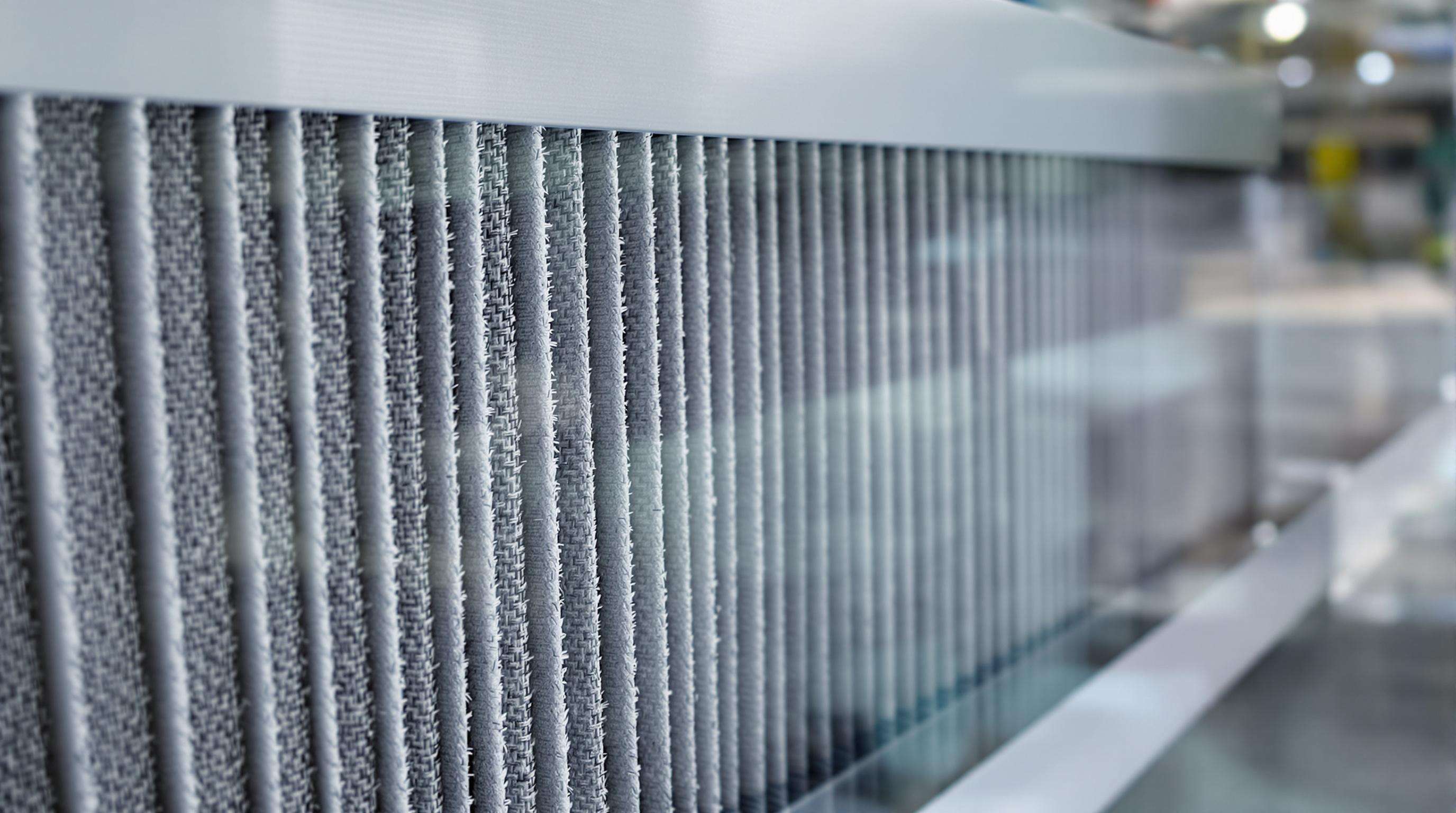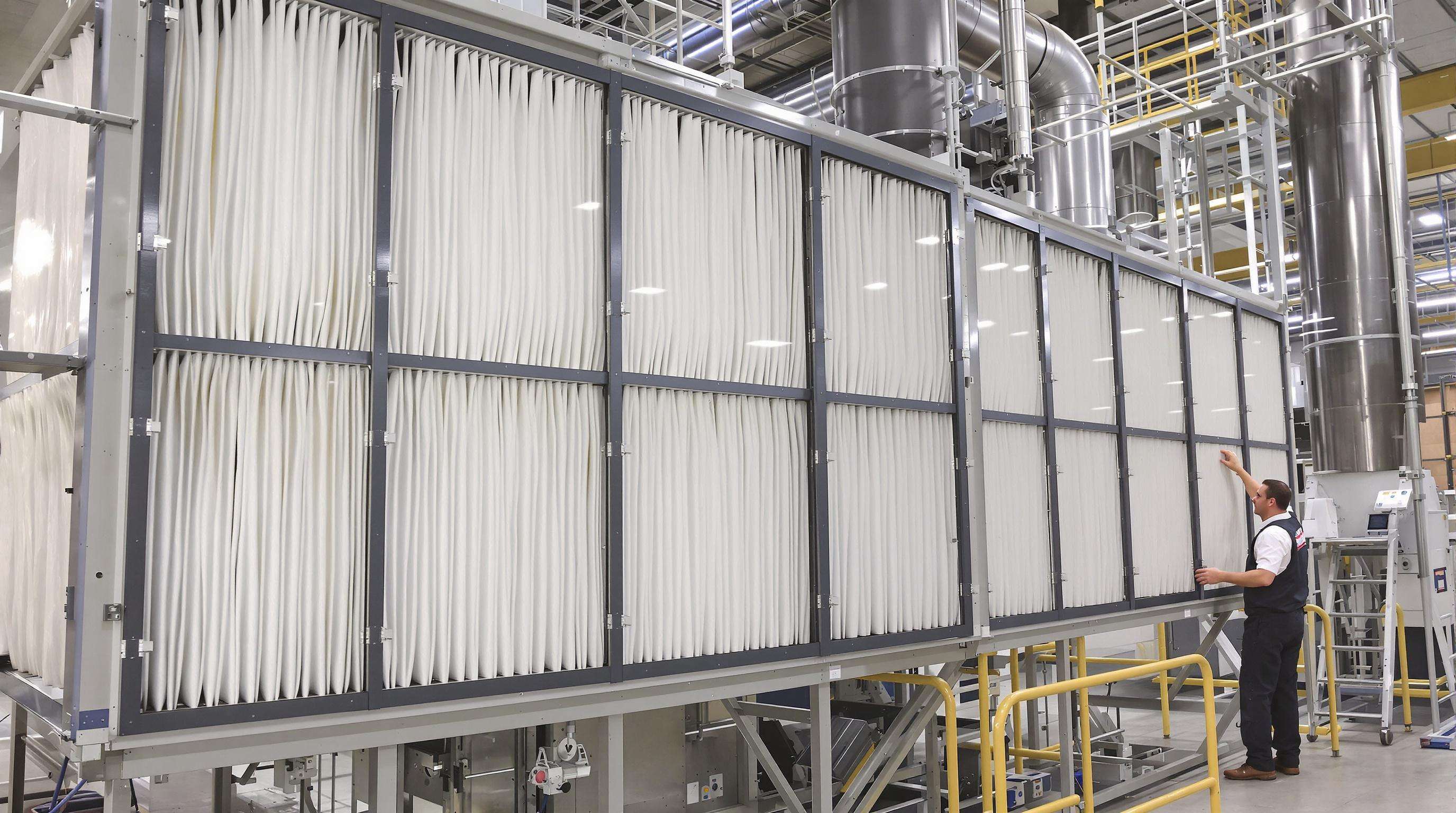The 1970s marked the birth of pleated filter technology when manufacturers needed better ways to trap particles without burning through energy. What started as simple folded media has come a long way since then thanks to breakthroughs with electrospun fibers. These tiny threads allowed engineers much finer control over how porous the material was and how the fibers lined up, something documented by Zhang and colleagues back in 2021. Looking at the bigger picture, over fifty years later we see these filters transformed into sophisticated systems that mix different materials together. Think melt-blown polyester combined with nanofiber coatings for instance. The result? Filters that work harder for longer periods between replacements, making them indispensable in everything from HVAC systems to industrial air scrubbers where reliability matters most.
Pleated filters work so well because of how they're designed. Research published in Powder Technology back in 2022 showed something interesting when looking at these filters. When the pleats are angled correctly, they actually give us about three times more filtration surface area than regular flat filters that take up the same space on a shelf. The way these filters fold reminds me of an accordion. Air moves through them in all sorts of directions instead of just straight through. Because of this design, particles bump into filter fibers around 80% more often before exiting the system according to Teng and colleagues' research from last year. What does this mean for performance? Better capture rates without making the air flow slower or stop altogether.
Pleated filters outperform traditional systems across key performance metrics:
| Metric | Pleated Filters | Bag Filters | Cartridge Filters |
|---|---|---|---|
| Surface Area Ratio | 3.2:1 | 1:1 | 1.5:1 |
| Pressure Drop (Pa) | 150 | 450 | 300 |
| Dust Holding (g/m²) | 850 | 400 | 600 |
Data from Bulejko et al. (2018) shows that this design reduces energy consumption by 40% in nanoparticle removal applications compared to conventional alternatives, making pleated filters a superior choice for high-efficiency industrial filtration.
Recent improvements in electrostatic technology, as noted by Feng and colleagues back in 2019, have pushed pleated filters to capture 99.97% of those tiny PM0.3 particles while still letting air flow through at over 100 cubic meters per minute. When manufacturers arrange the pleats just right, around 30 to 50 folds per inch seems to work best. This setup creates a smoother airflow pattern that actually helps prevent dust from clumping together too quickly on the filter surface. We've seen these filters perform remarkably well in actual cement plants too. Some units ran nonstop for between 8,000 and 12,000 hours straight, which is roughly 2.5 times what traditional bag filters manage before needing replacement. That kind of longevity makes a big difference when dealing with all that dusty industrial environment.

Modern pleated filters now integrate biodegradable polymers and recycled synthetic fibers, balancing environmental responsibility with industrial durability. Nanocomposite coatings enhance particle capture while enabling full recyclability, addressing concerns about microplastic pollution. These materials maintain performance in harsh environments and safely degrade at end-of-life, aligning with circular economy principles.
The best filter designs these days go for monomaterial construction because it gets rid of those mixed layers that just make recycling harder. Take a look at pleated cartridges - one of these bad boys can actually take the place of about four to five regular filter bags. That cuts down on raw materials needed somewhere around 30 to maybe even 40 percent without sacrificing how much dust they can hold. Manufacturers are also starting to use adhesives that don't contain solvents and frames without any metal parts. These changes make taking things apart for recycling so much easier. We're talking about recovering around 92% of components when using closed loop systems now. To put that into perspective, that's basically twice what we see with old school filters still floating around out there.
Pleated structures offer roughly 2.8 times the surface area compared to flat media options, which means less resistance when air flows through them around 15 to 20 psi reduction makes a real difference. Over the course of a year, this design can cut down on fan energy usage by approximately 18 to 22 percent for each installation site, resulting in fewer carbon dioxide emissions overall. The high efficiency comes from those special nanofiber layers that manage to catch almost everything (about 99.97%) even at particles as small as 0.3 microns, all while keeping the initial pressure drop under 1 inch water gauge. These filters actually perform better than traditional electrostatic precipitators and membrane filters when looking at both how well they work together with their energy requirements.
Compliant media blends now meet ISO 14025 environmental standards without compromising OSHA-mandated air quality. Industrial facilities report a 63% faster return on investment due to combined energy savings and reduced hazardous waste disposal costs, proving that sustainability and operational performance can coexist in heavy industry.
Pleated filters actually capture about three to four times more contaminants compared to those flat surface designs we see so often. The secret lies in those accordion style folds which give them roughly four hundred percent more surface area within the exact same footprint. What makes them really stand out though is the graded density media inside. This special construction lets them trap tiny particles down around 2 to 5 microns without getting clogged up too quickly. When put through their paces in testing environments, these pleated models hold onto approximately 85% of what they catch even when dealing with air speeds above 300 feet per minute. That's way better than regular bag filters that only manage to keep around fifty to sixty percent of particulates at similar conditions.
Pleated filters coated with PTFE membranes can last through over 1,000 cleaning cycles, which is roughly three times longer than standard polyester materials without treatment. The automated reverse pulse cleaning systems keep pressure drops under control at around 8 inches water gauge for periods lasting between 18 to 24 months. This means facility managers spend about 30 percent less time on hands-on maintenance each year. When it comes to unexpected shutdowns caused by failed filters, plants that switch to pleated filter designs report seeing about 40 percent fewer incidents compared to those still relying on traditional cartridge systems. The difference in reliability makes a big impact on overall operational efficiency.
A Tier 1 auto parts supplier replaced traditional bag filters with pleated variants in robotic welding stations. Despite a higher initial cost ($18 vs. $12 per unit), the pleated filters delivered:
These improvements were driven by superior handling of submicron welding fumes while maintaining consistent airflow.
Pleated filters might cost about 20 to 35 percent more initially compared to standard options, but they actually save money in the long run. When looking at total costs across five years of operation, these filters end up being around half as expensive when calculated per hour of use. Many facilities have seen their return on investment happen pretty quickly too sometimes within just nine to twelve months especially where there's heavy usage going on. The math checks out too one dollar spent typically brings back nearly five bucks worth of savings over time. And interestingly enough, companies that pair pleated filters with smart pressure monitoring systems via IoT technology get even better results. These setups cut down energy consumption somewhere between 18 and 22 percent simply because maintenance gets scheduled based on actual data rather than guesswork.
The patented pleated cartridge design manages to catch about 98% of PM2.5 particles because it combines deep filtration with much larger surface area than regular bag filters actually have. Think about it this way: these pleated designs offer over two and a half times more filtering space. When we look at flat media versus pleated ones, the latter creates just enough turbulence inside the filter that dirt gets trapped in those little pockets without making the air resistance go above 1.2 inches on the water gauge scale. Some research from last year indicated something pretty interesting too. During busy production periods when things are really going full speed, pleated filters were able to grab around 63% more tiny particles than what standard bag filters managed to do under similar conditions.
A midwestern auto parts plant saw something remarkable happen after they installed those pleated bag filters for their welding operations. Within just six weeks, PM2.5 levels dropped by nearly 57%. Pretty impressive stuff considering they were still running at full speed, processing around 12 tons per hour of stainless steel. The air quality stayed consistently clean too, keeping dust particles under 5 micrograms per cubic meter. That's actually 82 percentage points better than what NIOSH considers safe. And don't forget about the real world impact on daily operations. Factory supervisors noticed almost no interruptions anymore because of ventilation issues. Work stoppages related to poor air quality fell by 89% during those busy production windows when every minute counts.
Most modern pleated filters meet around 94% of the OSHA 1910.134 standards for clean air when they have those multi-layer composite materials installed. According to the EPA's latest Air Toxics guidelines from 2022, pleated polyester mixed with PTFE works great for trapping dangerous metals such as chromium and nickel. Plants that switch to these advanced filter media along with automatic cleaning systems consistently pass surprise inspections at 100% compliance rates. That's pretty impressive when compared to traditional felt baghouses which only manage about 68% compliance in similar situations. The difference shows just how much better technology has become in recent years for industrial air quality control.

Pleated filters work great when installing them into older equipment throughout various sectors like metal fabrication shops, pharma labs, and food production facilities. Most models come in standard sizes between 12 to 14 inches in diameter, with manufacturing precision kept within about 3% variance. According to the latest Industrial Filtration Report from 2024, these dimensions match up with around 88 percent of dust collection units found in North America. For the majority of installations, there's typically no need to modify existing structures at all. The spacing between pleats has been carefully engineered to stay within 2 to 5 millimeters range, which means they won't get in the way of either shaker or pulse jet cleaning systems during operation.
Pleated filters deliver significant improvements across critical operational parameters:
| Metric | Traditional Bags | Pleated Filters | Improvement |
|---|---|---|---|
| Airflow Resistance | 1.8–2.2 in H2O | 0.9–1.1 in H2O | -49% |
| Dust Holding Capacity | 150–200 g/m² | 450–600 g/m² | +200% |
| Pressure Drop Rise Rate | 0.25 in/hr | 0.07 in/hr | -72% |
According to 2023 ASHRAE benchmarks, these gains extend maintenance intervals by 30–50% and reduce energy consumption by 18%.
Modular pleated cartridge systems are now used in 67% of new dust collector installations (McKinsey Industrial Survey 2024), allowing scalable capacity adjustments through simple cartridge additions or removals. This approach reduces expansion costs by $18–$23 per CFM compared to full system overhauls, while maintaining filtration efficiency above 99.97% for particles ¥1μm.
Pleated filters are made from a variety of materials including biodegradable polymers, recycled synthetic fibers, and nanofiber layers. These materials enhance filtration efficiency and environmental sustainability.
Pleated filters offer greater surface area, improved dust holding capacity, and reduced energy consumption compared to traditional bag and cartridge filters. They also have longer lifespans and lower pressure drops.
Yes, pleated filters can seamlessly integrate into existing dust collection systems, typically without modifying the infrastructure.
Yes, modern pleated filters incorporate biodegradable and recyclable materials, reducing environmental impact and aligning with circular economy principles.
Industries such as HVAC, automotive manufacturing, metal fabrication, and industrial air filtration benefit significantly from the efficiency and cost-effectiveness of pleated filter technology.
 Hot News
Hot News2025-01-17
2025-01-13
2025-01-08
2024-12-27
2024-12-23
2024-12-16